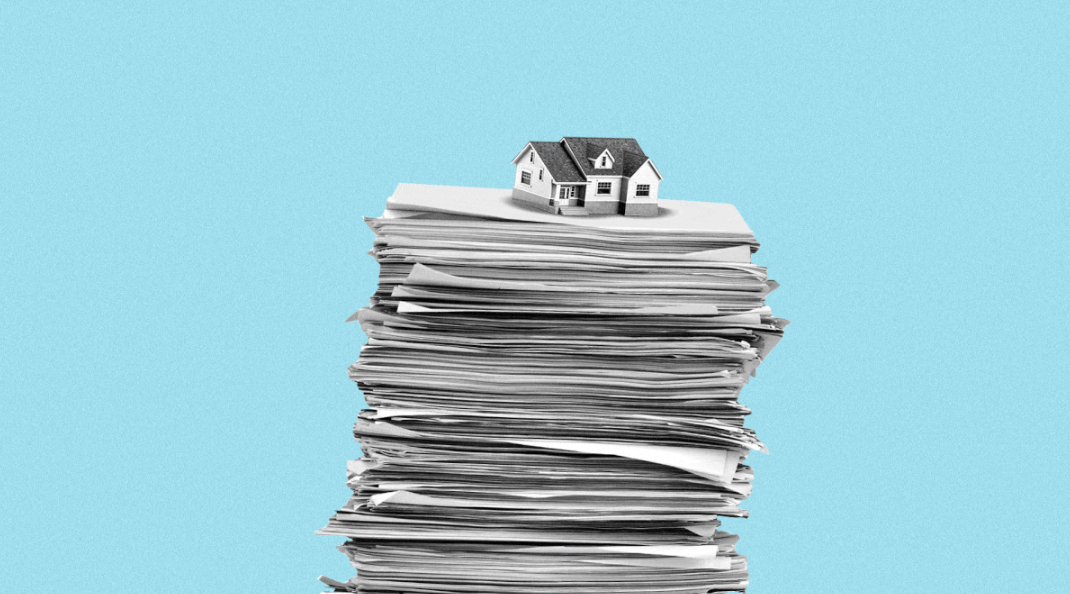👋 Happy Friday! Today is National 🍿Popcorn Day. I swore off popcorn in my mid-teens (you know, the “braces” years) and never really got back into it. But, hey, to each their own!
1 big thing: Teachers’ housing: a canary in a coal mine?

Teachers in many parts of the U.S. can’t afford housing near their schools, so some school districts are helping out. Workers in other industries have yet to see similar relief.
Why it matters: Municipalities nationwide struggle to provide affordable housing for their workforce, including essential workers. Some school districts have landed on a solution, but it’s not clear whether the model will translate to other professions.
Teachers do hard, important work. But in many places, they can’t afford housing.
In Colorado, teachers average $63,000 a year. This doesn’t go far in a state where the average single-family home costs $528,000 and rents often run north of $1,700 a month.
Florida has the lowest average adjusted salary for K-12 public teachers in the country for the 2021–22 school year at $50,508, while the average single-family home costs $409,243, and rents are the same as Colorado’s
School districts are stepping in: In Aspen, where the median home price is $843,000, the school district rents $50 million worth of residential properties to teachers at below-market rates.
Aspen has lost almost $5 million since the program began, but supporters say it’s worth it to attract and retain high-caliber educators.
In Texas, two school districts have initiated a similar program.
Great, but: First responders, healthcare workers, administrative staff, and others also struggle to find housing as prices soar.
They don’t have well-resourced, public service-oriented employers like a school district to help out.
Unsustainable commutes to jobs in expensive markets mean critical jobs go unfilled.
Housing solutions for lower-income workers remain elusive.
Government-backed affordable housing programs, supported by private philanthropy, offer some relief but they’re not keeping up.
Decreasing interest rates and new construction aren’t making a difference.
The bottom line: School districts may be able to help their teachers, but the model isn’t going to fit other industries in the same predicament. Civic and business leaders must find creative solutions to retain key workers.
2. Housing Market Predictions for 2024

Declining mortgage rates could jolt the market out of its 2023 slumber, but experts are cautious.
Good news on interest rates: With rates for 30-year fixed mortgages averaging 6.6% and trending downward, buyers are perking up. There’s even a scenario where rates could drop below 5% this year.
Yes, but: While lower rates mean buyers get more house for their buck, more buyer activity isn’t necessarily going to mean lower home prices or more home sales.
It’s all about supply and demand: The housing shortage is real—and ongoing.
Despite an increase in single-family home starts last year, we’ll need “years of accelerated new home construction to narrow the supply shortage gap from more than a decade of underbuilding,” says Odeta Kushi, an economist at First American.
The number of multifamily rental units under construction overshadows the slight uptick in single-family construction.
Caveat: Logan Mohtashami, economist at HousingWire, sees large multifamily projects slowing down due to high labor costs and thinks builders will focus on lower-intensity projects like single-family homes.
Some markets are better than others. For new builds, look to the Sun Belt, the cheapest part of the country for residential construction.
Reliably affordable markets in the midwest and northeast are also promising.
Danielle Hale, chief economist for Realtor.com, even thinks the Southern California market could bounce back.
“Cash is king”: Jeff Checko of RE/MAX Advantage sees everything coming up roses for investors. “Now is one of those ‘cash is king’ times that you should be absolutely taking advantage of,” he says, “maybe even bulk purchases from builders that are really willing to just get out with their behind.”
We live in interesting times.
It’s an election year. Wars rage.
The climate continues to set new records.
Pandemics are real.
What’s in store for the housing market—for any market—in 2024? The consensus of all the prognostications appears to be:
The end of rising interest rates combined with high labor costs and a poor buyer-to-inventory ratio is likely to keep home prices more or less steady.
Any event coming out of left field could rock them up or down.
“For 2024, I want to stress that the economic data can turn on a dime—both positive and negative—in ways that weren’t the case in the previous decade,” Mohtashami warns.
The bottom line: Buyers can expect lower mortgage payments but not lower prices.
Sellers are likely to see demand continue to rise.
Industry professionals will need to keep a finger in the wind all year, adjusting on the fly to whatever new realities come our way.
3. Catch up fast

More 24-year-old Gen Z’s owned homes than their predecessors in earlier generations. National Mortgage Professional
The race to refinance is on as mortgage rates fall. Newsweek
Lower mortgage rates are shaking up these markets. Bigger Pockets
Long-distance movers chased lower housing prices from one metro to another, and Orlando was one of the top five receiving them. Zillow
46 NYC office buildings could convert to residential with assistance from the City’s new “Office Conversion Accelerator.” Axios
Nearly 9 in 10 homeowners have mortgage rates below 6%. The Hill
The 10 most-affordable markets to invest in during 2024 (spoiler alert: none are in Florida). Bigger Pockets
4. Pic of the day

The “visionary” of a business sits as the top of the accountability chart and is often one of the founders.
They must embody the company’s mission and values, come up with big ideas, keep an eye on the distant (but not too distant) horizon, strategize about directions to take the company, attract talent, lead, mentor leaders, innovate, cultivate big relationships, and build a legacy.
Innovating is one of the toughest tasks I have to do as the visionary of our companies.
Being a lawyer-technician, it’s easy to fall into grinding away at technical work for clients.
You get sucked into working in the business so much that you don’t have time to work on the business.
You have to make space for yourself to get clarity and focus so you can kickstart those parts of your brain that go dormant when you’re in your auto-pilot mode of doing the technical work each day.
Meditation works.
Journaling works.
Sitting in a hotel lobby (or anywhere else) and writing down every. single. detail. you. see. hear. smell. and feel. for an hour or two will stimulate creativity.
Working with a coach, or anyone else who is willing to tell you about yourself, helps organize your thoughts and focus your energy on what’s important.
Learning to be a better leader will build more leaders in your organization. Those leaders will bring their ideas and innovations to the table because you’ve empowered and encouraged them to do so.
But most importantly, you have to put your ego away.
The pride of your ego will tell you that only you can have a great idea because you’re the founder-visionary.
You made the choices that put the company where it is today, and pride can stop you from admitting you made mistakes and changing course.
You have to know everything, so you can’t open yourself up to coaching or learning anything new about leadership.
The bottom line: One of our core values is to “be humble,” and — like all the core values — it applies to everyone in the company because humility keeps pride and your ego in check. Ultimately, that helps you be an innovative leader.
We hope you found this helpful — any feedback is appreciated and can be shared by hitting reply or using the feedback feature below.
Was this email forwarded to you? Subscribe here.
Have an idea or issue to share? Email us.
Follow MyLandTrustee and Joseph E Seagle PA on LinkedIN, or subscribe to our YouTube channel!
Be on the lookout for our next issue! 👋
Our mailing address: PO Box 547945, Orlando, FL 32854-7945
Our physical address: 1901 West Colonial Drive, Orlando, FL 32804



